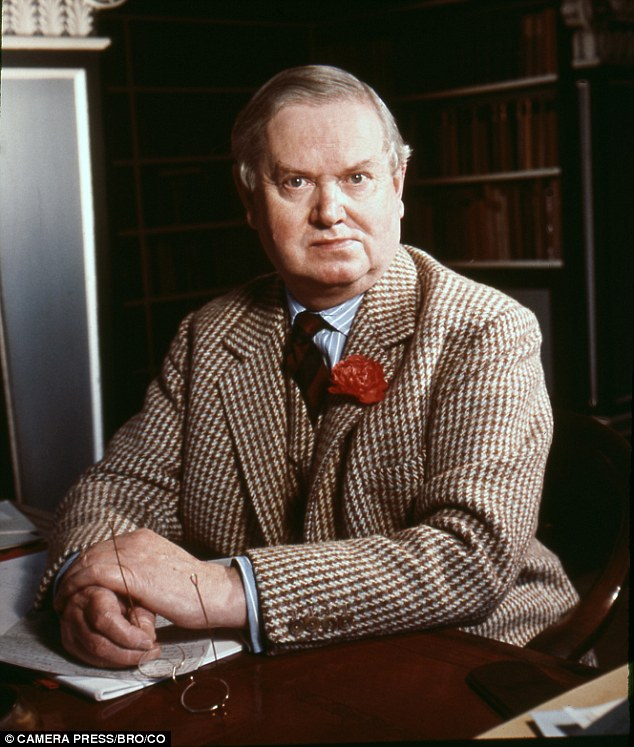The Italian word 'sprezzatura' perfectly describes that rather dishevelled but Oh-so-English look of a well-used tweed suit, as worn with such aplomb by so many men in the early half of the twentieth century. I came across the image below of author Evelyn Waugh which perfectly illustrates that casual, crumpled and unselfconscious English style. How can we emulate that comfortable tweedy appearance today?
 |
| Evelyn Waugh by Mark Gerson 1963 |
Waugh's suit appears to be a heavyweight tweed (they would normally have been fairly robust cloth in those days) in a shepherd check. As is normal with a well-worn-in tweed, it looks as comfortable as an old jumper and pair of jeans might be to us today. Men were used to wearing tailoring in those days, and Waugh would have thought nothing of throwing himself down on the sofa for a post-prandial nap fully clothed in his three-piece.
It's this slightly disordered but so natural and unforced look, the result of wearing a suit day in and day out, that's often admired in the English (or more strictly British) man of that era. Sadly today's man has largely abandoned tailoring in favour of casual wear or that mix of leisure and sports wear, 'athleisure', that, while possibly easy to wear, lacks elegance or style.
The art of wearing tailoring for relaxation has been lost and today it's felt that sloppy and shapeless is necessary for easy wear. Evelyn Waugh shows us that this is a mistaken view. Tweed is a casual cloth, designed originally for easy movement outdoors, retaining its shape and protecting the wearer from the elements. A good quality cloth is soft, robust and lightweight, moulding readily to the body. Its forgiving nature means that it doesn't need to be treated with care, like a flannel business suit.
Worn well the tweed suit combines effortless style with comfort. Let's buy more tweed suits (I suggest some sources of new and vintage tweeds below).
 |
| Waugh wears a houndstooth check tweed suit with a jaunty buttonhole |



.jpg)














.jpeg)
.jpeg)
.jpeg)







.jpeg)









